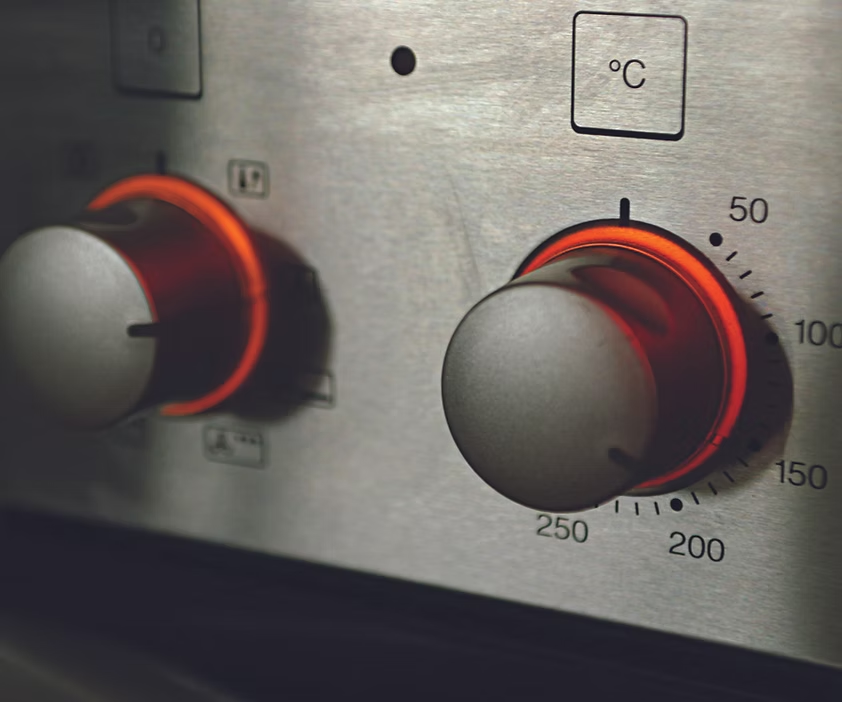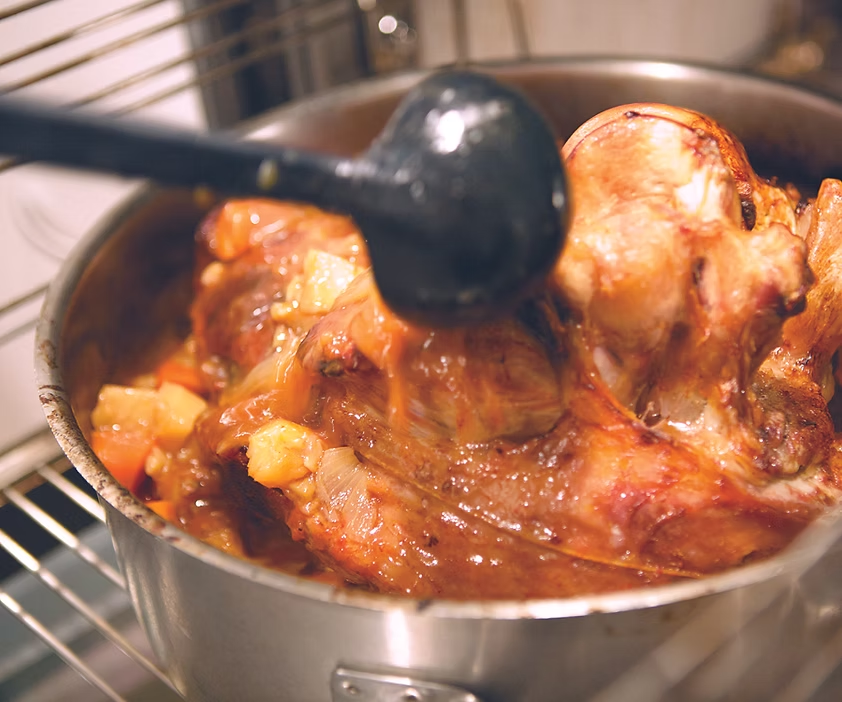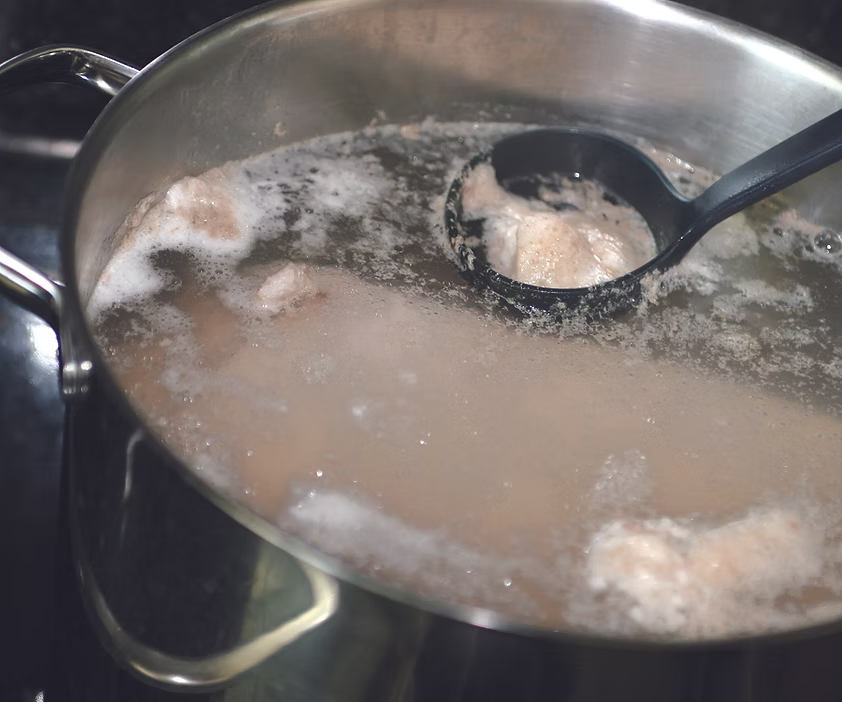
Common Conversions
Grams to Ounces
30 grams is approximately 1 ounce .
To convert grams to ounces multiply number of grams by .0353.
30 grams = 1 ounce
115 grams = 4 ounces
225 grams = 8 ounces
340 grams = 12 ounces
Grams to Pounds
To convert grams to pounds multiply the number of grams by x 0 .0022.
225 grams = ½ pound
450 grams = 1 pound
675 grams = 1 ½ pounds
900 grams = 2 pounds
1 kilogram = 2 .21 pounds
Volume/Weight Equivalents
½ ounce = 1 tbsp = 3 tsp
2 ounces = ¼ cup = 4 tbsp
4 ounces = ½ cup = 8 tbsp
8 ounces = 1 cup = ½ pound
16 ounces = 2 cups = 1 pint = 1 pound
Converting Litres to Quarts
To convert litres to quarts it is almost the same measurement, common ones are listed below.
.95 litre = 1 quart
1.4 litres = 1½ quarts
1.9 litres = 2 quarts
2.85 litres = 3 quarts
Temperature Conversions
To convert Celsius to Fahrenheit, double the Celsius and then add 30.
-23˚C = -10˚F or freezer storage
0˚C = 32˚F or freezing point for water 20˚C = 68˚F or room temperature
100˚C = 212˚F or boiling point for water 177˚C = 350˚F = 4 (British Gas Mark) or baking temperature
204˚C = 400˚F = 6 (British Gas Mark) or hot oven temperature
260˚C = 500˚F = 9 (British Gas Mark) or broiling temperature

Ingredients per kilogram of meat
½ litre red cooking wine
1 litre water
60 grams carrots, peeled
60 grams celery root, peeled
80 grams onion, peeled
10 grams garlic, peeled
50 grams bacon, smoked
1 bay leaf
1 clove
1 tsp black peppercorns
10 grams oil
50 grams tomato paste
Salt and pepper
My Rule of Thumb for Braising
Braising is the term for cooking pieces of meat which have a lot of tissue. To braise is to cook in little liquid in a covered heavy pan. The liquid, or the humidity, together with the heat turns the tough tissue into eatable gelatin, making braising the perfect cooking method for less tender beef cuts.
While not difficult, braising is relatively time consuming. However, once the meat is in the oven there is plenty of time to do other things. Depending on which cut is braised, it can be also prepared a day in advance.
1. Sear the meat, previously seasoned with salt and pepper, in the oil, in a heavy pan until the meat is nice and brown on all sides. Take the meat of the pan.
2. In the same oil, slowly roast the vegetables (cut into 2x2cm cubes) and the bacon until golden brown.
3. Add the tomato paste and roast it with the vegetables, slowly until the paste starts caramelizing and slowly browning.
4. Add 100ml cold water, stirring occasionally. Wait until the liquid has dissolved and the paste is caramelizing. Be careful that it doesn’t burn.
5. Repeat that step 4-5 times until the tomato paste smells like a brown sauce.
6. Add the red wine and the rest of the water. Bring to a boil and add all the herbs and spices.
7. If needed skim off the foam, add the meat, cover with a heavy lid and place the pan in the oven.
8. Braise until the meat is soft. Check once in a while if there is still enough liquid in the pan.
9. When the meat is soft, take it out of the sauce and keep warm . Skim off the grease that will be floating on top of the sauce and let the sauce reduce until it has the right consistency.
10. Taste for seasoning

Ingredients per kilogram of meat
2 litres water
80 grams carrots, peeled
60 grams celery root, peeled
80 grams onion, peeled
60 grams leek
2 bay leaves
2 cloves
1 tsp white or black peppercorns
Salt
My Rule of Thumb for Boiling
Boiling is another term for cooking pieces of meat which have a lot of tissue. To boil is to cook in a lot of liquid that covers the meat, but is not covered with a lid. The meat is boiled slightly under the boiling point in a broth. The effect is the same as braising; the liquid or the humidity together with the heat turns the tough tissue into eatable gelatin which makes it a perfect cooking method for less tender beef cuts.
As a cooking method, boiling is not that difficult but relatively time consuming. Once the meat is gently boiling, there is plenty of time for doing other things.
1. In a big pan place the washed piece of beef and add the water completely covering the meat.
2. Add a bit of salt and bring to the boil.
3. Skim off the foam which will build on top of the water.
4. Cut all the vegetables into 2x2cm cubes and add them together with the spices to the meat.
5. Bring to a boil and let the uncovered meat boil below the boiling point, nice and slow.
6. Boil until the meat is soft. If the meat becomes uncovered during boiling, add just enough water to cover the meat.
7. When the meat is soft, take it out of the broth and keep warm. Skim off the grease that will be floating on top of the sauce and check the seasoning. If the broth is not strong enough in taste, let it reduce a bit. The result will be the tastiest beef broth you’ve ever tried.
8. To give the broth the nice color we are familiar with:
• Cut a big onion in half and place in a heavy iron pan on the stove, cut-side face down, burn until the cut face side is black.
• Boil the onion together with the meat and the rest of the vegetables in the broth.

